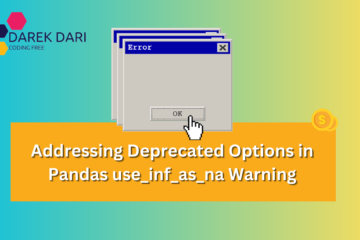
Table of Contents
Yo, fam, so you’re cruising on your WordPress site, thinking you’re all set to drop some fire content, but then bam! You hit with that dreaded “err_too_many_redirects” error. Ain’t nobody got time for that, right? Don’t stress, though, ’cause I got your back. Let’s dive into how to fix this glitch and get your site back on track.
Struggling with the “err_too_many_redirects” error on your WordPress site? Don’t sweat it! This blog post breaks down three easy steps to troubleshoot and fix the issue, so you can get back to dropping those fire blog posts without missing a beat. 🛠️ #WordPress #Troubleshooting #WebDevelopment
What’s the Deal with “err_too_many_redirects”?
Alright, listen up, homie. When your browser hits a snag and throws this error at you, it’s basically saying, “Yo, I’m trying to load your site, but it’s stuck in a loop of redirects.” It’s like your site’s caught in traffic, doing circles at the roundabout with no exit. Ain’t nobody getting anywhere like that! But don’t trip, ’cause we’re about to bust through this jam.
How Does ERR_TOO_MANY_REDIRECTS Look Like On Different Browsers
Check out how different browsers throw shade when they encounter the ERR_TOO_MANY_REDIRECTS error:
Google Chrome 🌐
Chrome keeps it straightforward with a message like, “This page isn’t working. example.com redirected you too many times.” It’s like, “Yo, you’re going in circles, dude.” And then it’ll hit you with some recommendations to get you out of that redirect loop.

Microsoft Edge 🌊
Edge is like, “Uh-oh, this page isn’t working right now. example.com redirected you too many times.” It’s got your back, warning you about those excessive redirects, just like Chrome.

Mozilla Firefox 🦊
Firefox is on point with its message: “The page isn’t redirecting properly. Firefox has detected that the server is redirecting the request for this address in a way that will never complete.” It’s like, “Hold up, something ain’t right here.”

Safari 🍏
Safari keeps it real with a message like, “Safari can’t open the page ‒ Too many redirects occurred trying to open “example.com.” It’s like, “Yeah, too many redirects, bro. I’m out.”

Opera 🎭
Opera’s not playing around either. It hits you with the same vibe as Chrome: “This page isn’t working. example.com redirected you too many times.” It’s like Chrome’s sidekick, backing it up with that ERR_TOO_MANY_REDIRECTS label.

So there you have it, folks! No matter which browser you’re rocking, they all got their own way of saying, “Hey, you’re stuck in a redirect loop!” Ain’t no escaping those ERR_TOO_MANY_REDIRECTS messages. 🔄🚫
Troubleshooting Steps 🚧
Step One: Check Yo’ Plugins
First things first, let’s peep them plugins. Sometimes, a rogue plugin can be throwing your site for a loop. Head over to your WordPress dashboard, disable any recently installed plugins, and see if that gets things moving again. If it does, you know who the culprit is. Give ’em the boot or find a replacement that plays nice.
Step Two: Tweak Yo’ .htaccess File
Now, if the plugin scene’s looking clean but you’re still stuck in redirect purgatory, it’s time to roll up them sleeves and dive into your site’s .htaccess file. This bad boy controls how your server handles requests, so a misconfiguration here can send your site into a tailspin. Look out for any wonky rules causing the redirects and clean ’em up. Just make sure to back up your file before you go ham on it.
Step Three: Check Yo’ Site URL Settings
Last but not least, let’s double-check them site URL settings. Sometimes, a mismatch between your WordPress Address and Site Address can throw things off. Head to Settings > General in your dashboard and make sure both URLs are in sync. Ain’t no room for inconsistency in this game, fam.
Alright, there you have it, squad. Three solid moves to squash that pesky “err_too_many_redirects” error and get your WordPress site back on the road to success. Don’t let no technical glitch hold you back from dropping them 🔥 blog posts. Keep hustling, keep grinding, and keep slaying the game! Peace out. 🚀
Clear Your Browser Data
First things first, fam. Sometimes, your browser just needs a little cleansing. Clearing your cookies can work wonders in fixing this error. Here’s how you do it in Chrome:
- Click on the three-dot icon in the top-right corner.
- Select Settings > Privacy and security.

- Choose Clear browsing data.
- Make sure to select Cookies and other site data and Cached images and files.
- Hit Clear data and see if the error disappears.
Check Your WordPress Settings
Next stop, your WordPress dashboard. Head over to Settings > General and check out your WordPress Address (URL) and Site Address (URL). These bad boys should match up perfectly.
If they don’t, make ’em match and save your changes. Easy peasy, right?
Hunt Down the Redirect Loop
Sometimes, you gotta play detective to solve this mystery. If you suspect some sneaky redirects are causing the error, use tools like Redirect Checker to sniff ’em out. Once you find the culprits, remove those bad boys and get your content back online!
Sort Out Your HTTPS Settings
Ah, HTTPS, the guardian of internet security. But if you ain’t careful, it can also be the source of your redirect nightmares. Check your HTTPS settings using tools like Redirect Mapper to see if they’re causing the loop. If you spot any wonky redirects, fix ’em up and breathe easy.
Tackle Cloudflare Head-On
If you’re rocking Cloudflare, it might be causing some trouble too. Check your settings for any HTTP to HTTPS redirect loops or conflicting Page Rules. If you’re stuck, hit up their support docs or community forums for some backup.
Crush Plugin Conflicts
Last but not least, those pesky plugins. Deactivate ’em all and see if the error goes away. Slowly reactivate them one by one until you pinpoint the troublemaker. Once you find it, kick it to the curb and replace it with something better.
And there you have it, folks! Six killer strategies to squash that “err_too_many_redirects” error and get your WordPress site back in action. So next time it pops up, you’ll be ready to tackle it like a pro. Happy troubleshooting! 🛠️
If you find yourself locked out of your dashboard by this pesky error, fret not! You can still take charge and disable those troublesome plugins using good ol’ FTP or a nifty tool like cPanel. Here’s the lowdown:
- Connect to Your Server: Fire up your FTP client or hop into your cPanel File Manager—whatever floats your boat—and get yourself connected to your WordPress site’s server.
- Navigate to the Plugins Folder: Once you’re in, head over to the wp-content folder and dive deep until you find the plugins folder nestled snugly inside.
- Rename, Renounce, Reactivate: Here comes the magic trick. Give that plugins folder a new name, anything your heart desires—let’s say, plugins-deactivate sounds cool, right? By renaming the plugins folder, you’re basically giving WordPress the hint to deactivate all those plugins automatically.
- Log in and Log Out: Now, take a breather and head back to your site. If you’re lucky enough to wiggle your way into the dashboard, do it now. Once you’re in, pat yourself on the back—you’ve earned it.
- Reverse the Spell: Now that you’ve got access, it’s time to undo the magic. Head back to your server and revert the plugins-deactivate folder to its original name—plain ol’ plugins. Voila! Your plugins are back, but they’re chilling in a deactivated state. You can now leisurely stroll through them, reactivating them one by one until you find the troublemaker.
Remember: After renaming the plugins folder initially, make sure to log in to your WordPress dashboard. If you skip this step, your plugins might pull a sneaky move and reactivate themselves when you switch the folder name back. Yeah, it’s a quirky little dance, but hey, that’s the WordPress world for you!
What Is ERR_TOO_MANY_REDIRECTS?
| Error Cause | Description |
|---|---|
| Misconfigured WordPress website address | Your website points to the wrong domain or has a typo in the domain name or www prefix. |
| Corrupted browser cookies and cache | Common culprit, occurs due to outdated cache or corrupted cookies. |
| Faulty WordPress plugin | Caused by corrupted, outdated, or misconfigured plugins. |
| Incorrect HTTPS settings | Misconfiguration of SSL certificate or HTTPS redirect rules. |
| Misconfigured server settings | Faulty variables in the .htaccess file. |
| Issues with third-party services | Misconfigured content delivery network (CDN) or other third-party services. |
Oh, snap! 🚫🔄 The ERR_TOO_MANY_REDIRECTS error is like a never-ending maze for your browser. It’s like, “Hey, where’s the party at?” But it can’t find the right address, so it just keeps bouncing back and forth between URLs, leaving you stuck in a loop that never seems to end. 😫
Why’s this happening, you ask? Well, blame it on misconfigured website addresses, pesky corrupted cookies and cache, cranky plugins, wonky HTTPS settings, messed-up server configurations, or even those third-party services acting up. 😒
But hey, don’t sweat it! We’ve got your back with some killer methods to squash this error once and for all. So sit tight, grab a snack, and we’ll dive into the solutions real soon. Ain’t no ERR_TOO_MANY_REDIRECTS gonna bring us down! 💪🛠️
Learn more
FAQ: ERR_TOO_MANY_REDIRECTS Error
Here’s a roundup of frequently asked questions about the ERR_TOO_MANY_REDIRECTS error, complete with helpful answers and a sprinkle of emojis:
Q: Why Is My URL Redirected Too Many Times?
A: When your URL is redirected too many times, it’s like being stuck in a loop-de-loop carnival ride 🎠. This happens when there’s a glitch in the matrix—a.k.a. an infinite loop in the redirect chain. Blame it on wonky server setups or misconfigured redirects!
Q: How Can I Prevent an ERR_TOO_MANY_REDIRECTS Error?
A: Ah, the age-old question! 🤔 To dodge the ERR_TOO_MANY_REDIRECTS error, make sure your server settings are shipshape 🛠️. Double-check those redirects to steer clear of loop-de-loop land. And don’t forget to give your browser cache a good ol’ clean sweep! 🧹
Q: What Causes a Redirect Loop in the First Place?
A: It’s like a never-ending game of tag! 🔁 A redirect loop happens when your browser gets passed around between URLs like a hot potato 🥔. Blame it on mischievous server configurations or plugins gone rogue. Keep an eye on those redirects—they can be sneaky!
Q: Can Clearing My Browser Cache Really Help?
A: Absolutely! 🌟 Think of it as hitting the reset button on your browser’s memory. Clearing your cache can wipe away those pesky redirect paths and give your browser a fresh start. It’s like giving your car a tune-up before hitting the road!
Q: Is There a Quick Fix for Redirect Loop Errors?
A: Unfortunately, there’s no magic wand 🪄 to make redirect loop errors disappear in a puff of smoke. But fear not! By diving into your server settings and staying vigilant against sneaky redirects, you’ll be well on your way to breaking free from the loop!
Q: What If I Keep Getting Redirected Despite Clearing My Cache?
A: Hmm, sounds like a stubborn one! 🤨 If clearing your cache doesn’t do the trick, it’s time to roll up your sleeves and dig deeper. Check those server configurations and plugin settings for any signs of mischief. And don’t forget to keep an eye out for those sneaky redirects!
Q: Can I Just Turn Off Redirects Altogether to Avoid This Error?
A: While it might be tempting to hit the brakes on all redirects, that’s like throwing the baby out with the bathwater! 🛁 Redirects play a crucial role in keeping your site organized and user-friendly. Instead, focus on fine-tuning your redirects to avoid those pesky loops!














0 Comments